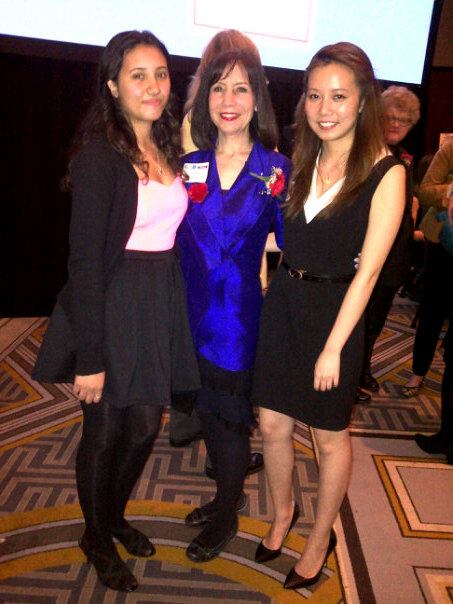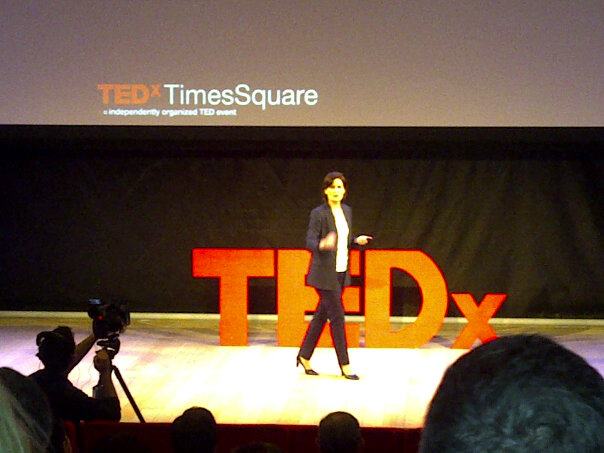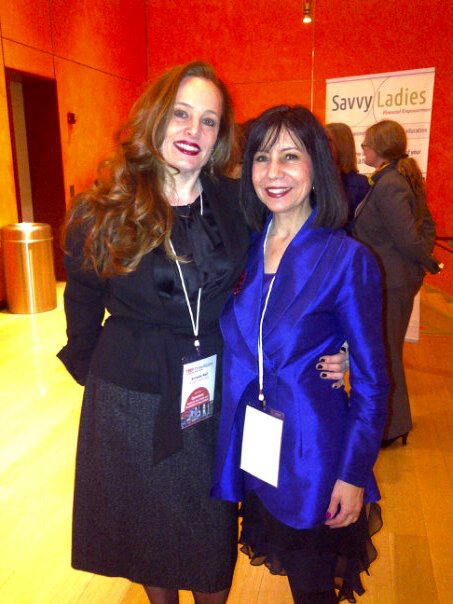Do you know the meaning of pragmatics? Most people believe that public speaking is about the spoken word. But what about the unspoken meaning? Public speakers and presenters who rely solely on the spoken word are at a disadvantage. Presentation excellence depends on so much more. Watch this video to learn one of the secrets of effective communication - presentation pragmatics.
Your Brain on Stage Fright
 Some call it flop sweat. Others call it stage fright. Whatever you call that tightness in the pit of your stomach, sweaty palms, and racing heart, we've all experienced it. Public speaking still ranks as a top fear. Even professional speakers feel nervous when the stakes are high. Fear of public speaking has always been a mystery. Why does it happen?
How does nervousness manifest? Why does the thought of public speaking send some people into a tailspin? Imagine going about your day, and suddenly your manager says you're expected to give a speech. In an instant, nervousness descends like a wave washing over you. What's going on in the brain?
Some call it flop sweat. Others call it stage fright. Whatever you call that tightness in the pit of your stomach, sweaty palms, and racing heart, we've all experienced it. Public speaking still ranks as a top fear. Even professional speakers feel nervous when the stakes are high. Fear of public speaking has always been a mystery. Why does it happen?
How does nervousness manifest? Why does the thought of public speaking send some people into a tailspin? Imagine going about your day, and suddenly your manager says you're expected to give a speech. In an instant, nervousness descends like a wave washing over you. What's going on in the brain?
When I polled people for my book, Knockout Presentations, I asked them why they felt nervous speaking in public. The thread running through most of the responses was the fear of humiliation. Well, it turns out that we're hard wired to worry about our reputations.
Did you know that fear is a primitive reaction to protect our bodies? Some people get more nervous than others and there is a reason for that. There are three main things that affect how you experience stage fright.
Find out in this article on the science of stage fright.
Body Language is the Message
A professor once said, "Words conceal rather than reveal". If that's true, how does the listener hear the real message? The answer is the study of pragmatics. Non-verbal communication is as important to every public speaker as the words they prepare. But too often, public speaking becomes an exercise in memorizing words without much thought to their physical presentation.
If the public speaker is unprepared, it will be communicated through nervous body language. The body will betray the presenter every time. Most of the message is non-verbal. For that reason, it's imperative that public speakers study pragmatics. Watch this video to learn about body language.
Give Fear the Finger
If you're like most people, you avoid public speaking like the plague. But that's a recipe for failure. Successful people must have good presentation skills and speak to build their reputations and expertise. What most public speakers do, is resist their fear and what you resist, will persist. Here's another idea. Instead of trying to control your thoughts, use your body and give fear the finger. Watch this video to learn how:
http://youtu.be/BxKEBN2RqR0
Press Release: Students Rock FWA Dinner Speeches
For Immediate Release DiResta Coaches Student Award Winners for Annual FWA Awards Dinner
 New York (April 29, 2013) — Two students, Ashley and Fang Fang, stole the show last night as they gave their two minute acceptance speeches to 600 attendees at the Financial Women's Association annual dinner.
New York (April 29, 2013) — Two students, Ashley and Fang Fang, stole the show last night as they gave their two minute acceptance speeches to 600 attendees at the Financial Women's Association annual dinner.
Diane DiResta, President of DiResta Communications, Inc, and a member of FWA, volunteered to coach the student presenters for the third year. The coaching involved helping them craft their speech and deliver it with confidence from the main stage.
Get Your Morning Mojo and Communicate with Impact
I spoke at the Morning Mojo networking group held at Citibank about Communicating with Impact. Business is not about the numbers. Business is about communication and the numbers simply reflect how well you communicate. Watch this short video segment to learn how to communicate with impact. http://youtu.be/S8HnrGcF6oY
Let Your Hands Do the Talking: The Science of Gestures
Several years ago, my friend adopted Mimi, an 18 month old girl from China. Not long after, I came to visit her and noticed that Mimi was making a gesture for more food. My friend and I are both speech pathologists, and I recognized that she had taught Mimi sign language - and it was working. She was 18 months old and did not understand or speak English, but she was able to communicate with her English-speaking mother using sign language. It was interesting to me when I read this article on The Science of Gestures. I always emphasize the use of gestures with my clients for a number of reasons. Gestures serve to:
- make the presenter look confident.
- channel nervous energy.
- emphasize certain words or points, making the speaker more dynamic.
- reduce monotone, enabling speakers to vary intonation.
But I wasn't aware of the neuroscience behind gesturing. In two separate studies with children, researchers found that using and watching gestures helped students retain more information.
Most speakers are both visual and auditory presenters. That means they use the spoken word and they project PowerPoint slides. The audience sees and hears the message but the missing link is kinesthetic learning. And that's where gestures come in.
Effective public speakers anchor their message with gestures. I once attended a presentation where the speaker told the audience, "Touch your mind and your heart," to help the them remember his point.
We all know someone who speaks with their hands. I remember one man who gesticulated wildly whenever he spoke. This irritated his wife to no end. One day in frustration, she grabbed his hands as he was speaking. He stopped the conversation, looked at her and pleaded, "Let me talk!" It seemed hand movements were a way for him to communicate.
It turns out that using gestures help us to clear our cache, or short-term memory, when we are speaking. Moving our hands in conversation and while presenting, allows us to process more information-like Mimi who learned sign language at 18 months. But gestures are not just for children. They have a lot of value for adult public speakers, as well.
Not sure what to do with your hands? Watch this youtube video and find out.
TEDx Comes to Times Square
 Yesterday, I attended TEDxTimesSquare, which is an independently organized TED event in New York City. The theme was Openness: Exploring the Limits and Possibilities of Open Culture. TED stands for Technology, Education, and Design, and is a forum for public speakers to share ideas worth spreading.
Yesterday, I attended TEDxTimesSquare, which is an independently organized TED event in New York City. The theme was Openness: Exploring the Limits and Possibilities of Open Culture. TED stands for Technology, Education, and Design, and is a forum for public speakers to share ideas worth spreading.
It's a wonderful platform for professional speakers to gain exposure and for the audience to experience a wide range of speaking styles and fascinating topics.
One of the best presenters was Karol Ward whose presentation was called, "Claim Your Inner Voice". She was the epitome of professional speaking. From the message, to the timing, to her movement, to her story, to her slides - they all worked together to create one seamless message about the mind-body connection.
Another fabulous presenter was Mark Taylor who spoke about "The Enemy of Openness". He shared that the secret to conflict management is triads. With two people, one is right and the other is wrong. With three people, it's easier to accept feedback. Now I know why my mastermind group of three people works so well.
Amy Goldsmith's talk was titled, "Yours, Mine and Ours? Legal Limits of Openness." She shared some fascinating information about intellectual property. We think of intellectual property as literary or musical. But did you know that you don't own your own blood? Once someone draws your blood, it's considered waste material and a researcher can obtain a patent for use of your DNA or cells.

It's not enough to have good presenters. For an event to be successful, it has to be well-organized. TEDxTimesSquare ran smoothly due in large part to event planner Annette Naif.
Other people in the program included:
- Jim Estill - From Zero to $2 Billion Through Openness
- Tim Piper - Why Goodness is Good for Brands
- Christopher Bishop - Open Technology for 430,000 Employees
- Kitty Pilgrim - International Openness
- Guy Geier - Open Architecture
- Collin McCloughlin - Chasing Dreams
- Andy Cohen - Magical Assumptions Behind Openness
- Greg Harper - The Future Through Open Technologies
- Aliza Licht - The Power of Being Real
- Peter Shankman - Nice Finishes First
Is Your Difficult Audience in the Workplace?
 When you think about difficult audiences, do you envision an audience in an auditorium with you speaking on the stage? Well, you don't have to be a formal public speaker to encounter a difficult audience.
Your audience includes your co-workers, employees, management and vendors. When you're dealing with so many different personalities it's inevitable that there will be conflict. Here's where trained public speakers have an advantage - the skills that are used to handle a difficult audience also apply when you're communicating one-on-one.
When you think about difficult audiences, do you envision an audience in an auditorium with you speaking on the stage? Well, you don't have to be a formal public speaker to encounter a difficult audience.
Your audience includes your co-workers, employees, management and vendors. When you're dealing with so many different personalities it's inevitable that there will be conflict. Here's where trained public speakers have an advantage - the skills that are used to handle a difficult audience also apply when you're communicating one-on-one.
But what if you can prevent conflicts in the workplace? That's even better. Nobody has a 100% conflict-free life, but many conflicts can be averted when you understand yourself and others.
The unexamined life isn't worth living." -Socrates
The first step in managing a difficult person or situation is to understand how you're wired. What is your natural behavioral style? This is the way you communicate easily without much conscious effort. It's like being right handed. You don't think about it. When you meet a person or audience who has the same behavioral style as you, communication happens more easily.
But what happens when you encounter people who are your opposite? This is when an audience may be perceived as difficult. It would be great to have a tool that would help you recognize different behavioral styles so you know how to communicate effectively.
The DiSC Behavioral Profile can help you do that quickly and simply. The DiSC Behavioral Profile identifies your natural communication style, shows you how to recognize different styles, and gives you the tools for managing those differences.
In other words, you'll learn to speak their language and have greater influence, better communication, more understanding, and less stress.
Most often, conflicts happen because of differences in style; you're talking apples, they're talking oranges.
This can happen when you're giving a presentation to a group. For example, too often, technical people give too much detail to senior management. Or, a sales presentation lacks the level of data and evidence preferred by a scientific audience.
By knowing how others are wired, you can predict the commonalities you'll share, you'll be able to predict the conflicts that may arise, and you'll have a strategy to compromise.
Wow... Just signed on to take the DISC program with Diane and she helped me learn how to communicate with style!! Diane was simply amazing and her suggestions were 'spot on'. No one should miss this opportunity!"
-A. Weidberg
Don't know which style you are? Want to know more about DiSC? Contact us and ask for a free sample report.
Press Release: Sheryl Sandberg, Move Over – Diane DiResta Tells Women How to Own the Room
For Immediate Release Diane DiResta invited to present at FWA 12th Annual Executive Coaching Summit, The Power of Communications: Stand Out at Every Stage of Your Career
New York (March 21, 2013) -- Diane DiResta, founder and CEO of DiResta Communications, Inc, was selected by the Financial Women's Association to be one of three speakers at their 12th Annual Executive Coaching Summit on Thursday, March 28 at 5:30 (sessions run from 6:30 to 8:00pm). DiResta will present her speech, entitled “Speaking With Impact: How to Be Clear, Commanding and Confident,” at the Credit Suisse offices on Madison Avenue in New York City.
Click here to read full Press Release.
Don't Monkey Around With Your Presentation
 I read an interesting story written by Deborah Grayson Riegel, who was giving a presentation at the Bronx zoo. In addition to her human audience, there were 20 monkeys outside with their faces pressed against the window, watching her presentation. Each time she advanced her PowerPoint slide, the monkeys would bang their fists against the window. Eventually, she had to let go of her PowerPoint presentation, and stopped changing the slides altogether.
Most of us are not going to be speaking at the zoo, but we will have our own monkeys to deal with - the usual cast of characters known as a difficult audience - hecklers, people causing distractions, zoning out, and generally interrupting your presentation. It's important to be flexible and work with your audience.
I read an interesting story written by Deborah Grayson Riegel, who was giving a presentation at the Bronx zoo. In addition to her human audience, there were 20 monkeys outside with their faces pressed against the window, watching her presentation. Each time she advanced her PowerPoint slide, the monkeys would bang their fists against the window. Eventually, she had to let go of her PowerPoint presentation, and stopped changing the slides altogether.
Most of us are not going to be speaking at the zoo, but we will have our own monkeys to deal with - the usual cast of characters known as a difficult audience - hecklers, people causing distractions, zoning out, and generally interrupting your presentation. It's important to be flexible and work with your audience.
Speaking of monkeys... someone recently threw a monkey wrench into my half day presentation training workshop, which was scheduled from 1:00 - 4:00pm. We were told that four of the participants had to leave by 2:30. The program was designed to build speaking skills so the speakers would be prepared to give their final presentations at the end of the workshop. We had to do a quick redesign on the spot - in 5 minutes. My partner and I huddled and came up with a plan. The goal was to give each participant the opportunity to present, leave on time, and still gain enough learning to succeed in their next presentation. It worked.
In public speaking, as in life, we always need a backup plan. Deborah had no choice - the monkeys forced her to stop using PowerPoint. Your audience may be more subtle, but good public speakers pick up the nuances and can change in a moment to better serve their listeners. Technology will fail. And an audience can quickly tune out. We need to be able to go where the current is taking us. That's the mark of a professional speaker.
5 Mission-Critical Steps for Public Speaking Success
 Vernice Armour, the first African American woman combat pilot, wrote an article in Speaker Magazine entitled, "The Gutsy Move". In the article, she relates what she learned in her military career and shared 5 mission-critical steps to realizing your goals.
In reading these steps, I realized they had a lot of application to success in public speaking and presentations. Here are Ms. Armour's 5 tips:
Vernice Armour, the first African American woman combat pilot, wrote an article in Speaker Magazine entitled, "The Gutsy Move". In the article, she relates what she learned in her military career and shared 5 mission-critical steps to realizing your goals.
In reading these steps, I realized they had a lot of application to success in public speaking and presentations. Here are Ms. Armour's 5 tips:
1. Establish clarity with your flight plan.
The first thing I ask my coaching clients is, "What is your intention? Why are you doing this?" And from there, we set a clear outcome. This is another way of saying, "Start with the end in mind." Too many speakers start working in PowerPoint. Your intention comes before your structure.
2. Create courage with pre-flight.
The biggest fear is public speaking. The first step in assuaging that fear is to prepare. The formula for successful speaking is 90% preparation and only 10% delivery. Preparation mitigates the unknown zone. The more you know about your topic, your audience, and the venue, the more confident you will feel. Use a presentation checklist to keep you on track.
3. Power up for takeoff.
Just like any pilot fires up the engines, a public speaker needs to get ready to speak. That involves mental conditioning, practicing out loud, timing and recording yourself. A speech coach will help you get ready to be your best. If you can't hire a speech coach, you can practice your speech at a toastmasters meeting, or in front of friends and colleagues.
4. Embrace execution.
Once you've prepared, the big moment comes when you're in the spotlight. Have the confidence that you already know your message and speak from the heart. Forget all about the perfect hand gesture or the ideal entrance. Be authentic and the audience will embrace you and your message. If you forget one of your points, the audience will not know. You can always say it a different way.
Interact with your audience through polling questions, exercises, games and technology. You'll lose your self-consciousness when you are dialoguing, connecting, and sharing the platform.
5. Review, recharge, re-attack.
It ain't over 'til it's over. Joking aside, your presentation doesn't end when you hear the applause. The next step is to collect feedback, review your performance, and re-work or apply the lessons learned to your next speech. Provide a paper feedback form before you finish speaking or ask people to respond online, but they must answer the survey while you're in the room. Most people will not fill it out post-presentation.
When you're a fighter pilot, you do fly into the line of fire. You can breathe a sigh of relief as a public speaker because the line of fire is only in your mind. Follow these five steps to make the most of your speaking mission.
Are You Speaking English or Alphabet?
 A good friend sent me an email about a possible speaking engagement. I contacted the meeting planner to tell her about my background and talk about what I could provide her organization as a speaker. I received a text message saying, "Hi Diane. Thanks for reaching out. I am on PTO but will write to you when I get back."
PTO? What the heck does that mean? I was thinking... part time? But I couldn't figure out what the O stood for. So I emailed my friend to ask her the meaning of PTO. She shot back an email saying, "No clue." My friend is at least 10 years younger than I am, so I thought she would know. I've been in business for 20 years and worked in corporations prior to starting my business. So I'm not unfamiliar with some of the terminology. But this really threw me.
A good friend sent me an email about a possible speaking engagement. I contacted the meeting planner to tell her about my background and talk about what I could provide her organization as a speaker. I received a text message saying, "Hi Diane. Thanks for reaching out. I am on PTO but will write to you when I get back."
PTO? What the heck does that mean? I was thinking... part time? But I couldn't figure out what the O stood for. So I emailed my friend to ask her the meaning of PTO. She shot back an email saying, "No clue." My friend is at least 10 years younger than I am, so I thought she would know. I've been in business for 20 years and worked in corporations prior to starting my business. So I'm not unfamiliar with some of the terminology. But this really threw me.
I asked my assistant when she came in today, and she knew the answer right away. She recalled first hearing the term in 1997 when she worked for a law firm. Why didn't I know this? Is it because I'm in my own business? My clientele are corporations.
This made me realize the importance of clear communication. I tell my clients and my audiences to never assume and to avoid jargon, acronyms and buzzwords, even if they're speaking to an internal audience or within their industry. Always define the acronym or term, and then you can use the abbreviation. Surely there will be people in the audience who don't know what it means and will be afraid to ask.
The world of technology has influenced the way we communicate. Texting and social media have overridden traditional grammar and spelling rules. While abbreviations serve technology, they can create communication breakdown. This is especially true with spoken communication because you can't go back and re-read the sentence for context. When presenting or communicating one-on-one with someone for the first time, avoid using acronyms and abbreviations.
For those of you who are like me, who may not be up to date on some of the latest alphabet soup terminology, here are some terms to avoid using in your presentation:
Acronyms
- PTO - Paid Time Off
- ITO - In The Office
- WFH/WAH - Work From/At Home
- LOA - Leave of Absence
- IIRC - If I recall correctly
- FWIW - For what it's worth
- BTW - By the way
- LMK - Let me know.
- OOO/OOTO - Out of (the) Office
- AR - Action required/requested
- AI - Action Item
What are your favorites? Share them in the comments - and don't forget to let us know what they mean!
5 Tips for Women Entrepreneurs Learned From the School of Life
 I recently read an article by Dylan Kendall entitled, "5 Tips for Women Entrepreneurs I Learned From the School of Life". Dylan's tips are simple and pragmatic. They can also serve as guidelines for anyone who speaks in public.
Here are her 5 tips and how they apply to public speaking:
I recently read an article by Dylan Kendall entitled, "5 Tips for Women Entrepreneurs I Learned From the School of Life". Dylan's tips are simple and pragmatic. They can also serve as guidelines for anyone who speaks in public.
Here are her 5 tips and how they apply to public speaking:
1. Get comfortable asking for money and ask with confidence. Public speaking involves first and foremost both inner and outer confidence. If you're a professional speaker, you need to be comfortable asking for your fee.
2. Learn how to ask for advice. You need to research and seek counsel from others who know your audience. It's also about polling and interacting with the audience.
3. Don't share everything but do share strategically and embellish wisely. It's especially critical to give the listener what they need to know - not everything you know. You can lose an audience or a prospect by giving too much detail.
4. "Help a sista out" -- network with and support other women. People don't realize that networking is a presentation and your ability to present yourself and your message clearly and compellingly is an important factor in attracting clients and advocates.
5. Understand what sacrifices you can make and when you should walk away. Part of your presentation is what you are willing to do for your audience. There are some situations where you should walk away and not accept a speaking engagement. When it's the wrong topic or the wrong audience, you need to know when to say no.
Confidence is King
I just read an article from James Caan, CEO of Hamilton Bradshaw, entitled, Confidence is King. He writes:
 "Ask any businessman or woman and they will tell you the same thing – confidence is a vital ingredient in the recipe for success. In other words, if you want to be really good at anything - no matter what walk of life you are involved in - you need to have belief in yourself and your abilities."
"Ask any businessman or woman and they will tell you the same thing – confidence is a vital ingredient in the recipe for success. In other words, if you want to be really good at anything - no matter what walk of life you are involved in - you need to have belief in yourself and your abilities."I work with leaders to build confidence in all their communications and the biggest hurdle is fear of speaking. So I created a series of videos on my YouTube channel for conquering fear of public speaking:
There's a New "Um" in Town
The New York Times interviewed me for an article entitled, "Um, Uh, Like Call In the Speech Coach". We discussed how non-words, or fillers, can rob you of credibility as a public speaker and diminish your executive presence, especially during media interviews. I've recently discovered there is a new "um" creeping into our presentations ... Watch this video to learn how this new word is infiltrating the public speaking world.
Why Public Speakers Fail
 Professional speakers who are satisfied with the status quo will surely find their audience slipping away. Just like the car replaced the horse and buggy, dynamic, interactive presentations are replacing the talking head. Today, public speakers have to play a bigger game in order to give a Knockout Presentation.
In a recent article entitled, Why Leaders Fail, the author cites the number one reason leaders fail and it's because they believe past success equals future success. There's a lesson here for public speakers and presenters. The article made me think about some of the public speakers I've heard. And just like in leadership, the rules of public speaking have changed. I've observed public speakers using an old time, one-size-fits-all presentation style. But what worked in the past, won't necessarily fly in today's market place.
Professional speakers who are satisfied with the status quo will surely find their audience slipping away. Just like the car replaced the horse and buggy, dynamic, interactive presentations are replacing the talking head. Today, public speakers have to play a bigger game in order to give a Knockout Presentation.
In a recent article entitled, Why Leaders Fail, the author cites the number one reason leaders fail and it's because they believe past success equals future success. There's a lesson here for public speakers and presenters. The article made me think about some of the public speakers I've heard. And just like in leadership, the rules of public speaking have changed. I've observed public speakers using an old time, one-size-fits-all presentation style. But what worked in the past, won't necessarily fly in today's market place.
Today's audiences are more sophisticated and demanding than ever before. The old, traditional method of the expert keynote speaker with the passive, listening audience, is an old model. Technology and social media have changed the game. Today, speakers engage their audience by using live polling for just-in-time responses, encouraging tweeting content, and interactive activities, even with large audiences.
Speakers have to look at their expertise differently and more creatively. It's not enough to be a standup keynote speaker. Today's savvy keynote speakers distribute their content through many media channels: podcasts, mp3 programs, white papers available on their websites, pre-program questionnaires or surveys, downloadable handouts, and youtube video clips. The focus has changed from "speaker-as-expert" to audience engagement and tapping into the expertise of the audience.
You can still take a horse and buggy ride, but it won't get you very far. If you want your presentation to have impact, you have to shift gears from giving a speech to taking a ride on the interactive highway and giving the audience an experience.
Les Brown Tells Professional Speakers to Surrender to the Story
I was the co-chair of the Les Brown mega event sponsored by the NYC chapter of National Speakers Association on February 15th. Les mesmerized 150 audience members as he taught us how to tell transformational stories that change lives.
Les Brown is one of the top celebrity motivational speakers and made a rare appearance for the benefit of local professional speakers.
In the afternoon session, he gave an interview from the stage and spoke about the business of professional speaking. Les warned professional speakers that focusing on back-of-the room sales is the wrong strategy.
"It's impact that drives income," he explained.
People have emotional memory. While content is important, it doesn't move people to action. When speakers create impact through stories and passion, the audience will want to do business with them. A powerful public speaker creates special moments. The best public speakers create an experience for the audience.
Les revealed that "the power is not on the stage; it's in the seats." He spoke about the rhythm of speaking and advised public speakers to pay more attention to listening than to their speaking.
"Never let what you want to say get in the way of what the audience wants to hear," he stated.
His passionate presentation flowed seamlessly, appearing effortless and spontaneous. But he demonstrated that there is a structure to storytelling and public speaking. Using his storytelling structure of It's Possible, It's Necessary and It's You, he demonstrated how he could use this template for any industry.
He taught a storytelling technique calledpivot and bridge. He then demonstrated the skill using story topics from volunteers in the audience. "Never make a point without telling a story and never tell a story without making a point." But this doesn't give public speakers license to drone on. Les explained, "The best speakers use the fewest words to go the furthest".
Les left the audience of professional speakers, toastmasters, and guests cheering on their feet and wanting more.
"The goal of a speaker is to give the audience a larger vision of themselves", he said. "Surrender to the story and speak from the heart."
Press Release: Get Ready to Give a Knockout Persuasive Presentation
For Immediate Release Diane DiResta's webinar, Give a Knockout Persuasive Presentation, is one of nine classes in the MarketingProfs Telesummit, Presentations Unleashed: Inform, Persuade, Inspire
New York (February 14, 2013) -- Diane DiResta, founder and CEO of DiResta Communications, Inc, was contacted by MarketingProfs to do a seminar as part of their Telesummit, Presentations Unleashed: Inform, Persuade, Inspire. DiResta's 60 minute webinar, entitled "Give a Knockout Persuasive Presentation," will go live on the website beginning February 14, 2013 at 12:00 noon EST and will be available as part of the course for 12 months.











